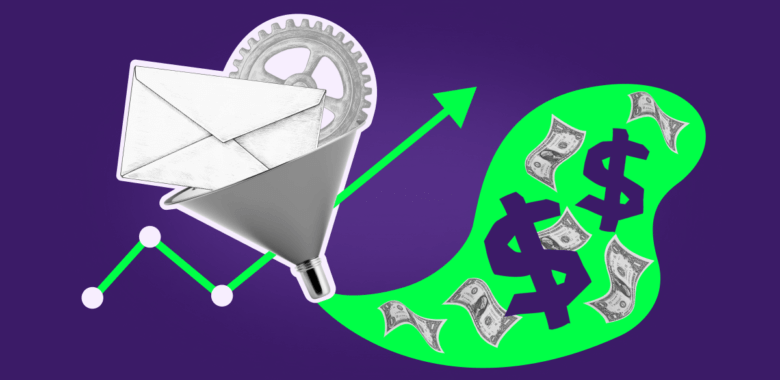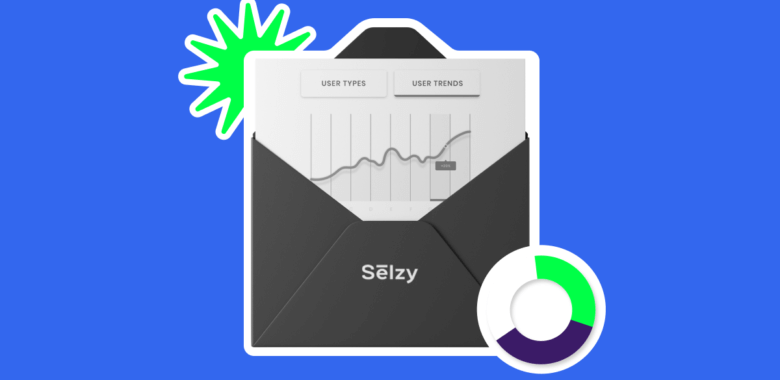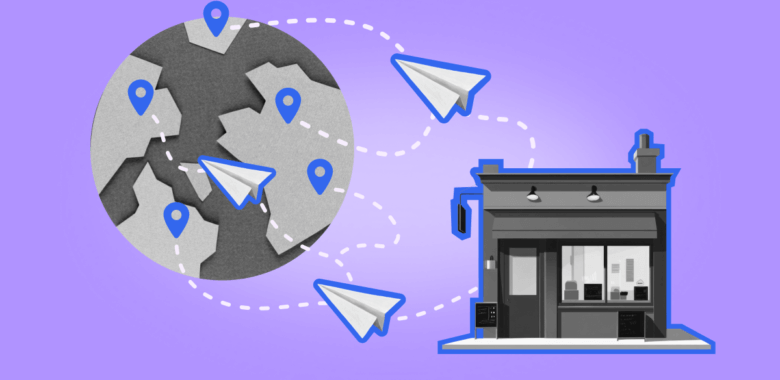Knowing the baseline can be useful, however, it is important to consider a variety of factors when evaluating email conversion rates. The conversion rate may vary depending on the industry, audience, and type of email.
Conversions can also shift based on the quality of content, changes in consumer behavior and market conditions.
By industry
Different industries see different conversion rates. Based on Klaviyo’s Email Marketing Benchmarks 2024, here are the average numbers for regular and automated campaigns:
| Industry |
Average conversion rate |
Average conversion rate
(automated emails) |
| Clothing & Accessories |
0.08% |
1.77% |
| Automotive |
0.06% |
1.74% |
| Electronics |
0.05% |
1.49% |
| Food & Beverage |
0.18% |
1.99% |
| Hardware & Home Improvement |
0.06% |
1.67% |
| Health & Beauty |
0.12% |
1.62% |
| Home & Garden |
0.06% |
1.65% |
| Jewelry |
0.05% |
1.48% |
| Mass Merchant |
0.05% |
1.31% |
| Office Supplies |
0.09% |
1.74% |
| Specialty |
0.10% |
1.69% |
| Sporting Goods |
0.06% |
1.77% |
| Toys & Hobbies |
0.10% |
1.81% |
Regardless of the email type, the Food & Beverage industry has the highest conversions while the Mass Merchant has the lowest conversions for automated campaigns and one of the lowest for regular email blasts.
Omnisend’s report has slightly different industries and numbers:
| Industry |
Conversion rate |
| Adult |
0.01% |
| Antiques & Collectibles |
0.15% |
| Arts & Entertainment |
0.18% |
| Auto |
0.07% |
| Beauty & Cosmetics |
0,07% |
| Books & Literature |
0.08% |
| Consumer electronics |
0,05% |
| Fashion & Apparel |
0.05% |
| Firearms & Weapons |
0.09% |
| Food & drink |
0.16% |
| Games |
0.18% |
| Gifts |
0.06% |
| Health & Wellness |
0.18% |
| Holidays & Seasonal |
0.05% |
| Home & Garden |
0.05% |
| Pet supplies |
0.13% |
| Tobacco/cannabis products |
0.13% |
| Sports |
0.08% |
| Toys & Hobbies |
0.10% |
| Travel |
0.07% |
| Wedding |
0.07% |
Based on these results, the industries with the highest conversions are Games, Arts & Entertainment, and Health & Wellness. The lowest conversions are seen in the Adult industry.
By email type
Different types of emails have different conversion rates, as each of them has its own purpose and audience. Understanding the conversion rate differences based on email type allows your brand to adapt email marketing strategies and maximize the overall effectiveness of each campaign.
Here are some numbers on conversion rates for different email types based on Omnisend’s report:
| Promotional emails |
|
| Back-in-stock |
5.84% |
| Birthday |
0.72% |
| Browse abandonment |
0.43% |
| Cart abandonment |
2.56% |
| Cross-sell |
0.53% |
| Lapsed purchase |
0.50% |
| Post purchase |
1.09% |
| Product abandonment |
1.02% |
| Product review |
1.17% |
| Welcome |
2.74% |
| Transactional emails |
|
| Order confirmation |
1.70% |
| Shipping confirmation |
1.58% |
By quarter
Email activity changes over the course of a year, but does it affect the conversion rate? In their 2024 benchmark report, Klaviyo demonstrates quarterly email performance to show whether the time of year has any effect.
The graph below shows one of the most prominent subcategories of conversions — placed orders. The placed order rate is consistent throughout the whole year and stays at 0.08%, except for Q4 when it increases slightly to 0.09%.
Practically, this means that you can keep your conversion rate benchmarks and KPIs the same between quarters, maybe raising those a little for the last months of the year when people shop on Black Friday and Cyber Monday.















